Tag: Welding College

Welding is undoubtedly worth exploring if you’re looking for an interesting career path that allows you to use your hands and create tangible results. Welders use metal to build various structures, from intricate decorative pieces to reinforcements for our bridges and large buildings. Several industry-specific competencies and soft skills are required for success as a welder. As with any career path, quality training is an excellent place to start.
North American Trade Schools offers a comprehensive Structural & Pressure Vessel Welder Diploma Program to equip you with all of the skills you’ll need to be employed in the welding field with confidence. Math for welding, health and safety concerns, and welding theory are just a few topics covered at length in our program. In addition, students can practice their welding skills in practical labs. Keep reading to discover what skills you can expect to learn in our training program and how they’ll help you succeed.
1. Physical and Administrative Capabilities Are Required
Welding is a physical job that requires a fair amount of strength and endurance. Everyday welding tasks include lifting, twisting, and bending to assemble and dismantle heavy-duty equipment. Welders also benefit from a steady grip as they must hold a torch steady for extended periods. After welder training, your eyes will be as important as your hands. Excellent depth perception, hand-eye coordination, and close vision will help you create consistently accurate results.
While having a physique is beneficial, administrative skills are equally as important.
Welding is a project-based career path. To succeed, you should possess excellent project management skills. This involves effective time management to meet deadlines, good project planning, organization, thorough documentation practices, and teamwork.
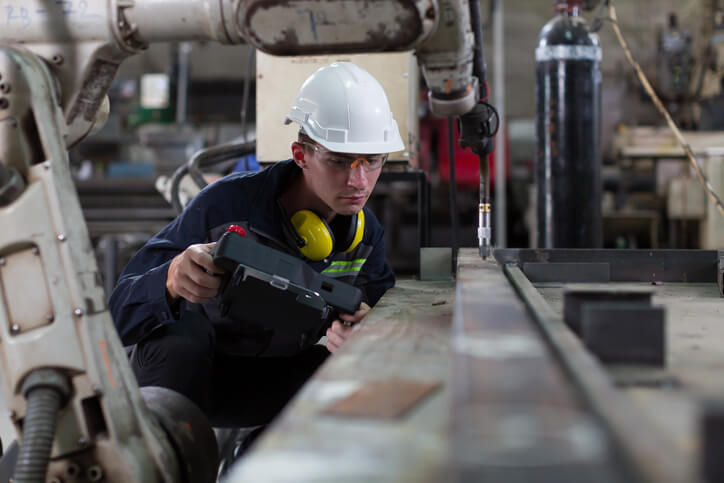
Though much of your work as a welder will be done independently, effective communication skills are essential to your productivity since you must collaborate with other team members, supervisors, and others working on your job site or factory.
2. Attention to Detail and Numerical Skills Help in Welder Training
Welders are required to produce results with minimal flaws. If you’re naturally detail-oriented, you’ll be well prepared to notice and fix grease buildup, corrosion, bubbling, and cracks on your work. As a welder, parts, material, and equipment inspection will be a regular part of your role, which requires taking note of issues quickly.
Your attention to detail will also help you maintain a safe work environment since you will often work in dangerous surroundings after welding college. In addition, flaws in your work could have public safety implications, so it’s important to make double and triple-checking a habit. Like other welding skills, you will have plenty of opportunities to refine your attention to detail during training as you learn what imperfections to look for in materials, equipment, and your projects.
Though you won’t need to understand advanced algebra to succeed as a welder, numerical skills are handy. Our Structural & Pressure Vessel Welder diploma program covers basic math for welders, which will help you calculate dimensions, interpret sketches, read blueprints accurately, and understand two- and three-dimensional diagrams. Good math skills will help you with your day-to-day welding tasks, logical reasoning, and problem-solving on the job.
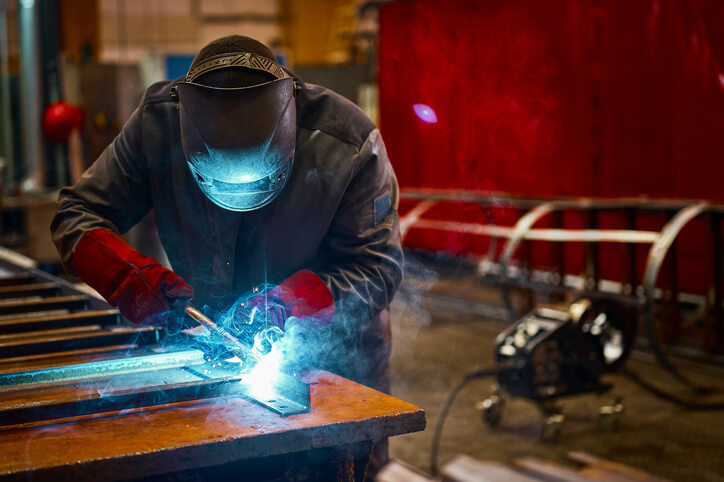
3. Mechanical Skills Will Help You Use Tools Properly
Welders work on various projects and must understand the technology and tools that will make their work more accessible and more effective. In our program, you will have the opportunity to practice using welding equipment in a state-of-the-industry lab environment under the supervision of our expert instructors.
Students learn how to use modern tools for welding, commonly used techniques like gas metal arc welding, gas tungsten arc welding, flux cored arc welding, and shielded arc metal welding. If you’re mechanically inclined and enjoy learning about new technologies, this part of your welding training will undoubtedly be fulfilling.
If you have what it takes to become a successful welder, start training today! The Structural & Pressure Vessel Welder diploma program will help you transform your natural aptitudes into highly marketable skills in an exciting industry!
Are you ready to earn your welding diploma?
Contact NATS to learn how you can get started.
4 Reasons to Consider a Career as a Construction Millwright After Welding College
October 18, 2022
Construction millwrights are responsible for installing, maintaining, troubleshooting, and repairing industrial and mechanical equipment. If you enjoy working with machines, are good with your hands, and like to practice your problem-solving skills, this could be the perfect career path for you. Some core responsibilities include reading schematic drawings, blueprints, and diagrams in order to guide your work. In addition, construction millwrights inspect equipment in order to identify malfunctions to be fixed.
On your path to becoming a construction millwright, you’ll have the opportunity to develop many specialized skills that will help you become a sought-after professional in a thriving industry. Are you still wondering if this path is right for you? Here are four great reasons to pursue a career as a construction millwright.
1. The Chance to Work in a Variety of Settings
As a construction millwright, some of your most common employment opportunities will be in the manufacturing, construction, industrial, mining, and electrical industries. This presents you with a range of options when it comes to work environments to explore. Don’t know what sector to start with? No problem! There are so many areas to choose from–if you try one and dislike it, you can simply try another. After completing welding classes and your apprenticeship, you could choose to work in a warehouse, in a construction firm, or in a manufacturing plant.
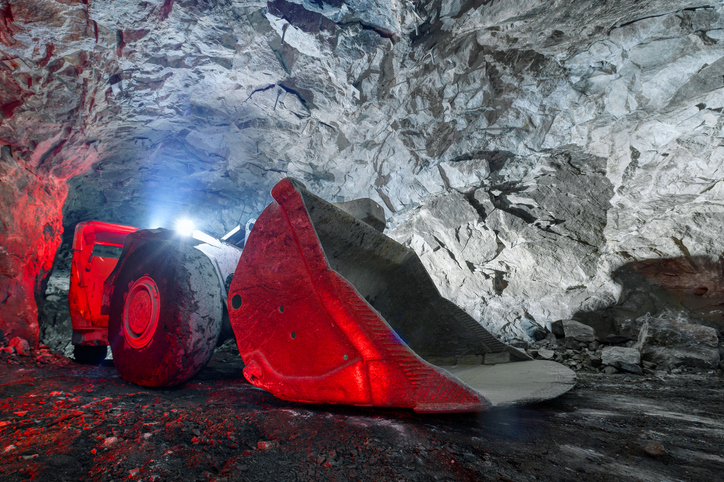
2. Plenty of Full-Time Positions Available Due to a Labour Gap
Several industry trends have contributed to a labour demand for construction millwrights in Canada, which you should definitely take advantage of. Because of recent economic growth in Canadian manufacturing, there’s been a growing need for personnel that have the skills to service and maintain manufacturing equipment. In addition, large investments in the mining and nuclear power industries have skyrocketed the need for construction millwrights in those sectors as well. Because of this growing demand, you likely won’t struggle to find work for the time being. The assurance of stability is always an excellent reason to consider a career path.
3. Exercise Several Skills on the Job After Welding College
Once you’ve completed the necessary welding technician training and developed the practical skills you need to become a construction millwright, there will be plenty of opportunities to put your many skills to the test.
Troubleshooting equipment will be one of your main duties as a construction millwright. For this reason, you’ll have plenty of chances to practice your problem-solving skills. In addition, interpreting blueprints and diagrams will be a part of your duties, which requires visual-spatial skills. Construction millwright work will provide ample opportunity to polish this specialized skill, which doesn’t always come naturally to people. Other essential skills you can polish during your training and on the job include attention to detail and adaptability.
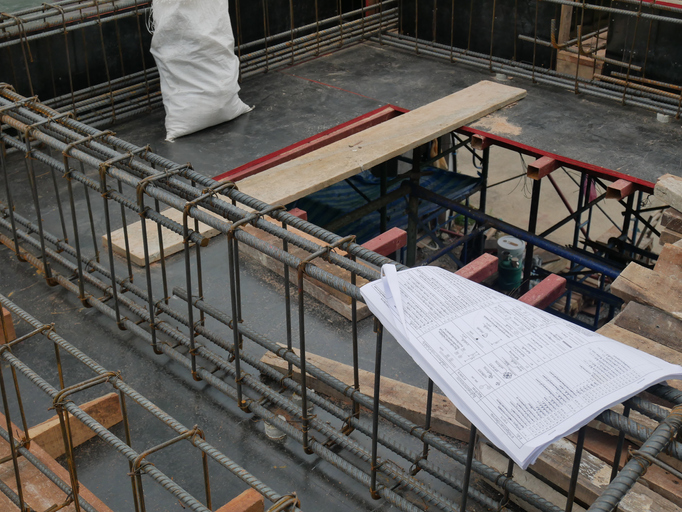
4. Earn as You Learn During Your Apprenticeship
One grievance that many people have when they decide to change their careers is the cost of training for a new job. When you have familial obligations and bills to pay, this can be a big obstacle. However, after training to become a construction millwright through welding college, you can choose to earn as you learn by applying for an apprenticeship. Looking for the right program to prepare you for learning on the job? In the Structural and Pressure Vessel Welder Diploma program, you’ll learn the fundamentals of welding and have the opportunity to put your knowledge to practice in the labs. With the right skills and experience, you’ll be ready to step into a paid job in no time.
Ready to enroll in welding college?
Contact NATS for more information!

For an individual who’s aspiring to have a successful and rewarding career, becoming a professional welder may be the right path for you. Welding is a fabrication process that uses heat and pressure to join metals or thermoplastics together. A welding career can take you to many different industries, from manufacturing, construction and mining to the aerospace, shipbuilding and military industries.
At North American Trade Schools, you’ll get hands-on and theoretical training in the welding practice. Through our pre-apprenticeship welding program, you’ll learn how to use modern equipment in welding processes for Gas Metal Arc Welding, Gas Tungsten Arc Welding and more. So, what’s it like having a welding career? Read on to find out!
After Your Welding Classes, Keep Safety Top of Mind
The first thing you need to know about welding is that as soon as your workday starts, you’ll be changing into your protective uniform and gear. Without the proper protective equipment and gear, you’re at risk of injury on the job site. After you complete your welding classes, you’ll have to make sure that you have fire-resistant clothing and gloves, as well as a protective helmet and N95 mask. You’ll then check your assigned projects and see what needs to be done for the day. At the same time, you’ll be collaborating with your co-workers and supervisors to ensure that everyone operates safely in the workspace and that the welding process runs smoothly.
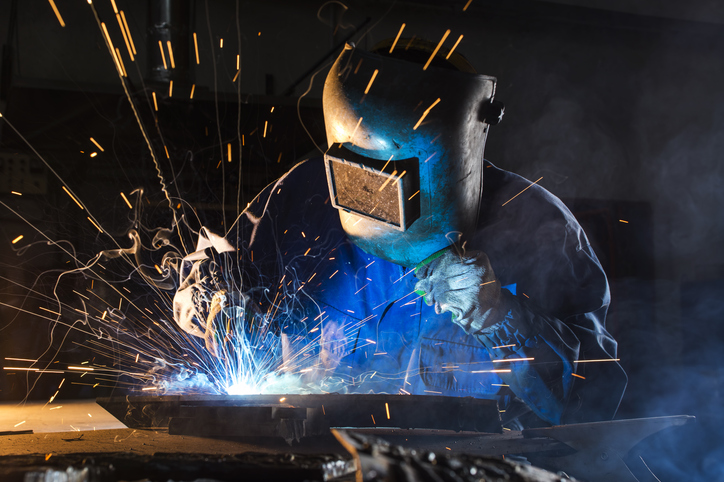
Expect Excitement Each Day of Your Welding Career
If you’re looking for dynamic work that keeps you busy, then you’re in luck! After you complete your welding technician training, you’ll find yourself working in a career that’s full of interesting opportunities, different settings, and varying working hours. You may get to work on a variety of tasks throughout the day, including joining metals together, cutting through materials, repairing holes for different structures, and more. So, a long day goes by more quickly than you think.
Your career won’t just lead to work in indoor spaces or scaffolding but will give you the chance to apply your skills to outside environments–sometimes in extreme or volatile conditions. You can be sure to get your adrenaline pumping as you work away on the job. So whether you’re working as a Welder, Welder Fitter, Boilermaker, Construction Millwright or Ironworker, your day will be full of excitement. As you shift from one welding project to the next, expect variety in your daily work and the potential to develop your career as an expert in different settings.
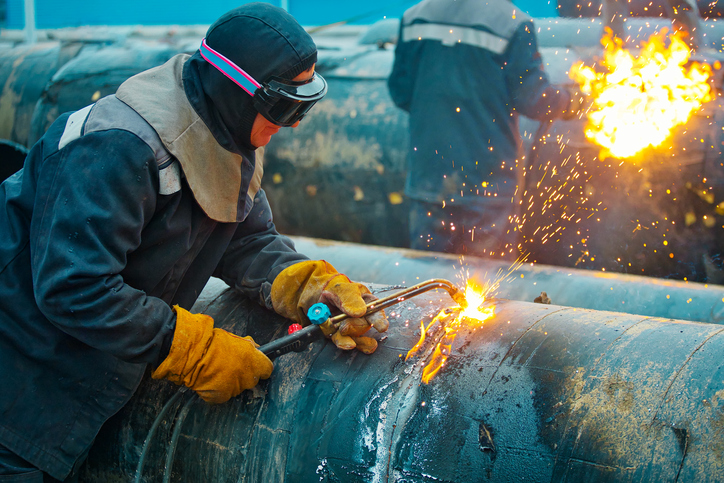
Your Day Ends the Same Way as it Started
Just like how you started, you’ll have to ensure the correct safety procedures are followed before you leave for the day. At the end of the day, it’s all about making sure that everything is ready for other welders and for the next day of operations. You’ll have to ensure that your welding job has been completed properly and that no issues have been left unresolved. Take the time to check that all the welding equipment and tools have been switched off and stored properly. It’ll be up to you to ensure that your work area is clean for the next day and with no hazardous materials left around. That way, you’ll be ready to start the next day on the job safely and efficiently.
Interested in a welding college?
Contact NATS for more information on our training programs!
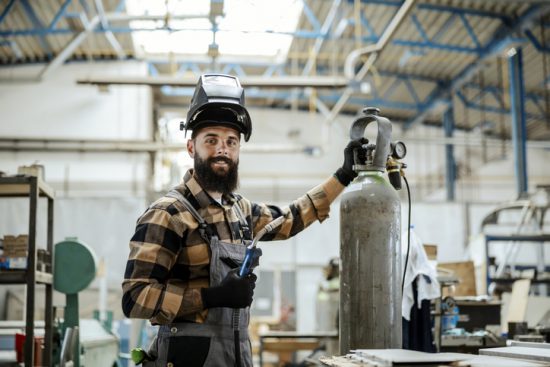
Welding professionals are responsible for joining metal parts together for different types of metal structures, including buildings, power plants, ships, pipelines and refineries. Training to become a Welder is a great way to secure a successful and rewarding career that you can be proud of.
At NATS, you’ll receive hands-on training in Gas Metal Arc Welding (GMAW or ‘MIG’), Gas Tungsten Arc Welding (GTAW or ‘TIG’), Flux Cored Arc Welding (FCAW) and Shielded Metal Arc Welding (SMAW or ‘Stick’). You’ll also learn techniques for basic joint welding, welding preparation, weld symbols and much more. Upon completing your training, this experience will prepare you to pursue a wealth of opportunities within the welding sector. You can begin your career in a junior position, and then gradually advance to other positions as you gain experience and skills.
Here, learn more about the career advancement opportunities you can access later in your career.
Become a Welding Inspector After Welding College
After several years of working as a welding professional, you may consider advancing your career and becoming a Welding Inspector. As a Welding Inspector, you’ll be managing other welders, with the responsibility of ensuring that all job specifications for the project at hand are met. Your welding college training, knowledge, and experience in health and safety will be of help when becoming a Welding Inspector. Your expertise will be needed to ensure that bridges, buildings, and other structures are structurally sound, performing visual inspections to catch any errors in the weld, such as cracks or pits. As a Welding Inspector, you’ll also be testing the stress level of the welds to make sure that they meet the required levels of ductility and strength.

Consider Becoming a Boilermaker
With welding technician training and additional experience working as a Welder, there are a few other advancement options you might want to consider during your career. For example, you may choose to work towards becoming a Boilermaker. As a Boilermaker, you’ll have the opportunity to build, install, maintain and repair the pressure vessels designed to store various gases and liquids. The pressure vessels boilermakers work with might include reactors, heat exchangers, boilers, tanks, closed vats or other containers. These professionals often work within energy facilities including hydro and oil-sands plants, as well as steel, chemical, cement and other manufacturing plants.
If you’re considering a career as a Boilermaker, you may need to complete additional training in the construction and maintenance of boilers, applying your background in welding to the field. You’ll use your welding skills to assemble boiler tanks, inspect and repair leaks and defects, and complete other necessary work orders.
Pursue a Career as a Pipe Fitter
Are you attentive to detail, or do you possess an aptitude for mechanics? If so, a career as a Pipe Fitter could be right for you. Pipe fitters are responsible for designing, installing and repairing pipe systems, using their background in welding to safely secure pipes to fixtures, walls and other system components. As a pipe fitter, you’ll spend time creating intricate pipe systems in alignment with industry specifications and regulations, measuring pipes to determine where they should be cut, and putting together piping using various welding techniques.
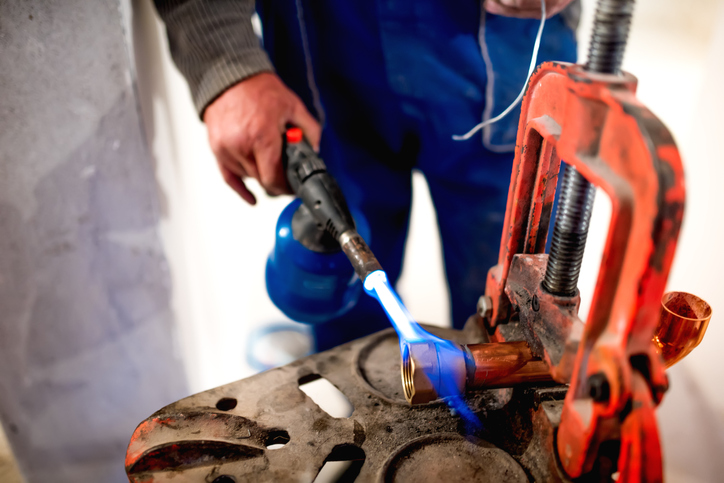
Successful pipe fitters have plenty of welding experience, enabling them to perform the often complicated welds necessary for pipe fitting projects. What’s more, these professionals possess a strong understanding of industry standards and codes, ensuring that they develop pipe systems which are able to safely transport hazardous chemicals. If this career path interests you, consider specializing in pipe fitting after completing your welding training.
Are you interested in welding classes?
Contact NATS for more information about our training programs!
A Guide to the Different Types of Welding Processes for Pros in Welding Technician Training
February 15, 2022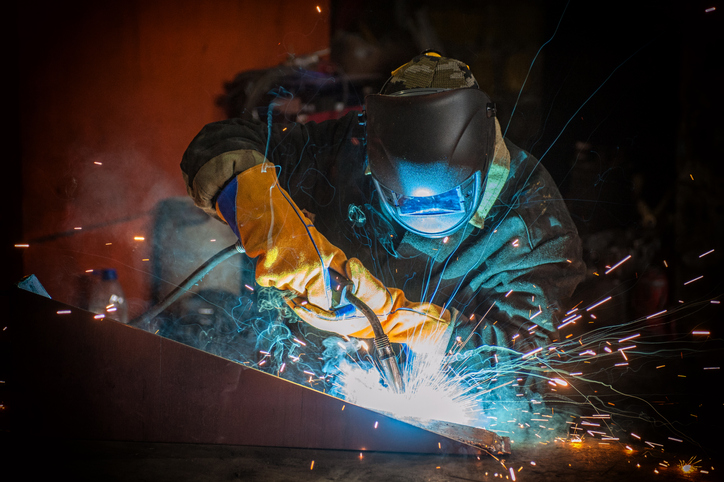
For aspiring welding professionals, there are endless opportunities to apply your trade. Without welding, many industries like the construction industry, aviation, automotive and more would not exist in the way that they do today. Buildings, appliances, vehicles, fences and space shuttles would have never come to life without the art of welding metals.
At the NATS, you’ll get hands-on and theoretical training in the field of welding, using modern equipment for different welding processes. By understanding some of the most common welding processes, you can launch a successful and skilled career. Read on to discover the different types of welding processes worth knowing.
Know The Simplest Form of Welding After Your Welding Technician Training
Stick Welding, or Shielded Metal Arc Welding (SMAW), is the simplest form of welding. This form of welding produces a constant current electric arc, using a power source. The current flows through a flux in the coated welding electrode. This coating mechanism ensures that the weld zone is not exposed to air while the rod is melting. You’ll realize after welding technician training, how cheap stick welding is and how compatible it is with most metals out there. This will allow you to work with stick welding in many industries, for shipbuilding, pipelines, constructions, and much more.
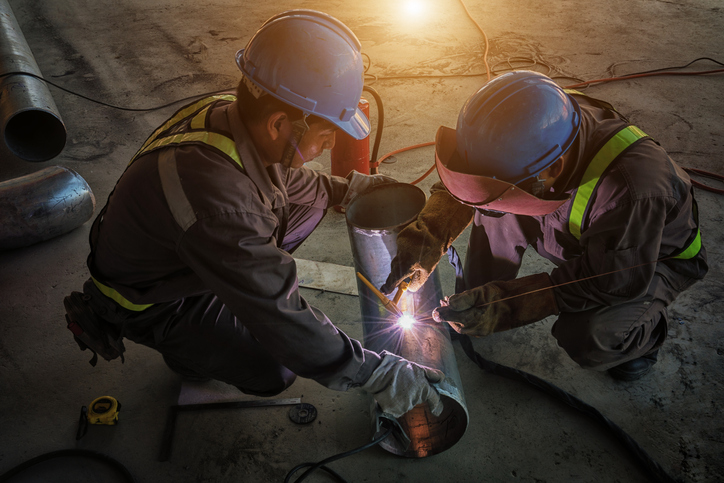
MIG Welding Is the Way to Go for D.I.Y Projects
MIG Welding, which is short for Gas Metal Arc Welding, is one easy type of welding that forms an electric arc between a consumable MIG wire and the piece you are welding. After you train at a welding college like NATS, you’ll be prepared to perform this type of MIG welding. You’ll see how MIG welding creates heat and causes the materials you’re working on to melt and join, forming a piece of molten metal. The heat that occurs during this welding process is covered by a shielding gas, which protects the welding from any contamination. MIG welding is also the method of choice for those who don’t want to spend too much on welding equipment.
Gain Experience and Start TIG Welding
TIG Welding, which is the short form for Gas Tungsten Arc Welding, delivers electric current to the weld section, using an arc welding process that uses a tungsten electrode. This type of welding has a non-consumable electrode. Welding also requires the use of Argon, a type of shielding gas that protects the weld metal from any contamination. This form of welding is not for everyone. In order to perform TIG welding without any challenges, you need to have proper training and gain experience in the field. TIG Welding is generally used to weld thin areas of aluminum, magnesium, copper alloys and stainless steel.
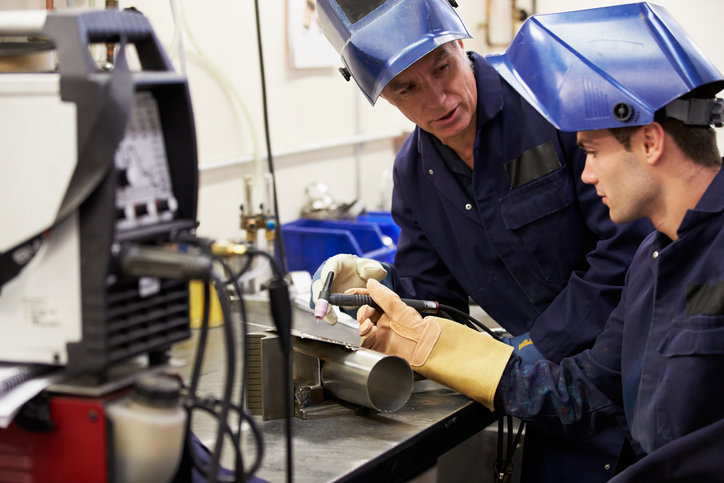
Finally, the Flux Cored Arc Welding
Flux Cored Arc Welding (FCAW) is an automatic or semi-automatic welding process. FCAW requires a consumable to be continuously fed a tubular electrode that contains a flux. It also requires a constant power supply and an external shielding gas to be supplied to protect the weld metal from any contamination. While most flux-cored wires can run without gas, some cannot. As a professional welder, you’ll have to refer to the manufacturer’s datasheet to know which welding wire to use. Flux Cored Arc Welding can be used for shipbuilding, heavy fabrications, constructing, welding and earthmoving.
Interested in enrolling in welding classes?
Contact NATS for more information!
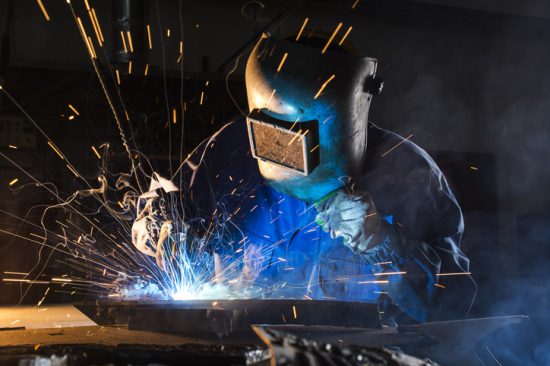
Are you looking for a new profession? When you choose to embark on a career path as a welder, you can make 2022 your most rewarding year yet. Trained in using welding equipment and processes to combine pieces of metal, professional welders are qualified to work in the construction industry, aviation industry, and automotive industry. These professionals can even choose to operate a business of their own.
If you love working with your hands and are constantly seeking your next creative outlet, an engaging career as a welder could be right for you. Below, discover five compelling reasons to begin welding courses and transform your future in 2022.
1. Demand for Pros with Welding Technician Training is Growing
One of the greatest benefits of attending welding college is that your skills will be in high demand within the construction industry and beyond. The trades are currently facing labour shortages as the baby boomer generations inch closer to retirement. That means there will be plenty of opportunities for those looking for work in the skilled labor sector. If you’ve been considering a career change, training to become a welder is a great way to secure a successful future.
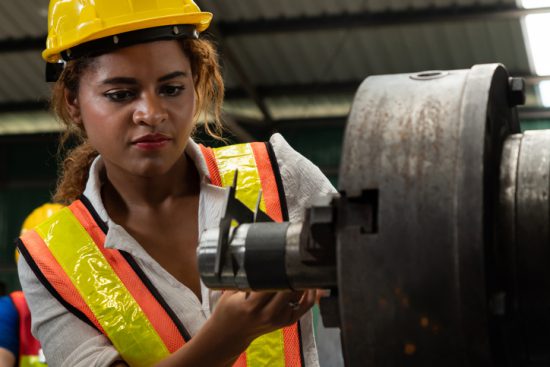
2. Choose from a Variety of Specializations
Training for a career should be a stepping stone, and with welding, that’s certainly the case. When you build the skills to become a professional welder, you’ll be able to specialize in a number of roles within the welding industry. You may choose to apply your skills within the manufacturing industry, the oil and gas industry, or perhaps work for a construction company. As a welder, you can also decide to become a boilermaker, a pipefitter, or an ironworker. No matter your interests, it’s easy to pursue them with welding training.
3. Welding is a Rewarding Profession
In addition to being extremely engaging, welding is a highly rewarding career path. After welding technician training, you’ll see your hard work pay off as you continue to develop your skill set. With dedication, there are many opportunities for advancement within the welding field. After gaining experience you can move beyond the role of the apprentice, to that of a supervisor, technician, instructor, or inspector. If you’re particularly passionate, you might even consider opening your own welding business!
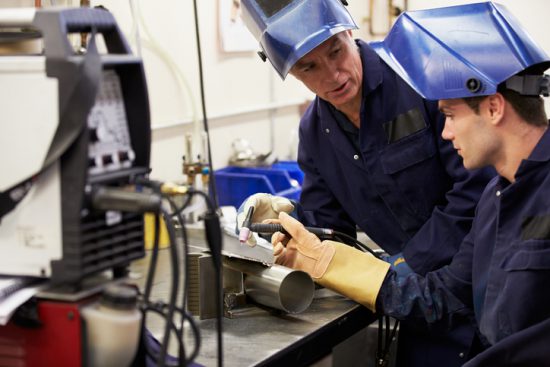
4. Benefit from an Active Career
With the hands-on work and exciting opportunities that accompany a welding career, you’ll have the ability to maintain an active lifestyle while on the job. As a certain level of physical fitness is required to keep up with the demands of the job, most welding professionals are able to stay in shape for a long time–contributing to a healthy lifestyle. If you’re looking for an alternative to a typical office job or a non-sedentary career path, welding is the perfect way to keep on top of your health and fitness, while rarely sitting for hours at a desk.
5. Be Career-Ready in a Short Period of Time
If you’re all set to plan your transition to a welding career, you’ll be happy to know that not only is this a rewarding profession, but you can obtain your welding diploma and certification in a matter of months. At NATS, students receive hands-on and theoretical training in the welding field, preparing them to enter the industry as skilled professionals. So why wait? Take the leap and embark on a career path in welding in 2022!
Are you ready to begin your welding classes?
Contact NATS to learn more about our program!
Taking Welding Classes? Why You Should Consider Pursuing an Apprentice Boilermaker Position
December 07, 2021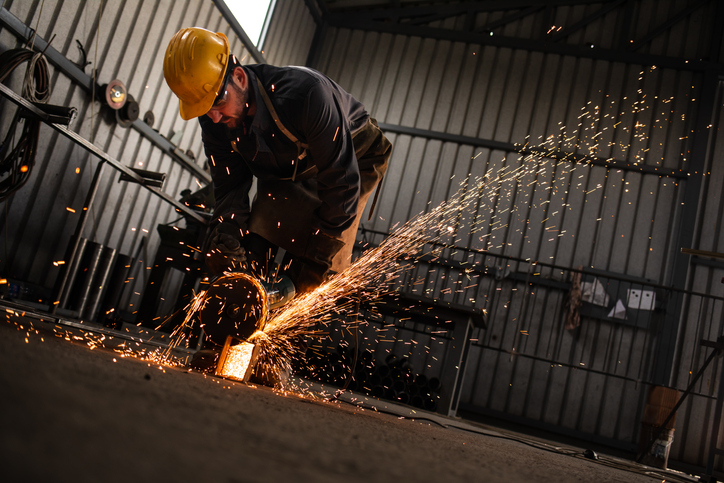
The best way to learn a trade is through hands-on experience in the field. This allows you to be job-ready, skilled, confident, and assume control of your choice of career path. An apprentice position is the key to establishing yourself as a skilled tradesman. It provides you with the necessary tools, skills, and credentials to get the job done–in different places–and within different settings. Studying theoretical concepts and knowledge is valuable, but especially so when combined with real-life training.
If you’re considering learning a trade, such as welding or are already learning one, a Boilermaker Apprenticeship opportunity is the way to go along with it. Read on to learn more.
Welding Technician Training That Makes a Difference
Welding Technician training prepares students for opportunities like an Apprentice Boilermaker position. At NATS, students have access to state-of-the-industry campuses providing ample opportunity to gain critical welding experience, while using modern equipment in welding processes.
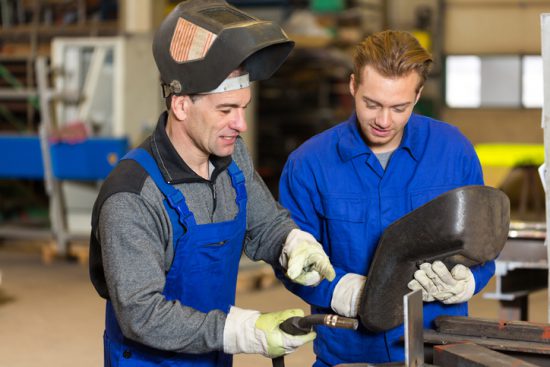
Our Structural & Pressure Vessel Welder Diploma Program will provide you with the knowledge and skills needed to set you on the right path as an apprentice and towards a fulfilling career with many opportunities.
No Day is the Same as a Boilermaker Apprentice
If you are looking for an exciting and fulfilling career, an Apprentice Boilermaker position could be the right choice. As an apprentice, you will experience different working conditions and develop essential skills that will propel your career towards succeeding at any work-related job site. Some of these skills include installation, maintenance, repairing, and troubleshooting when using stationary industrial machinery and mechanical equipment. You gain expertise in operating hoisting and lifting devices, which include jacks, tractors, cranes, and many more. You’ll get to learn to work on the ground, as well as a hundred feet above the ground, using heavy machinery that weighs by the tonne.
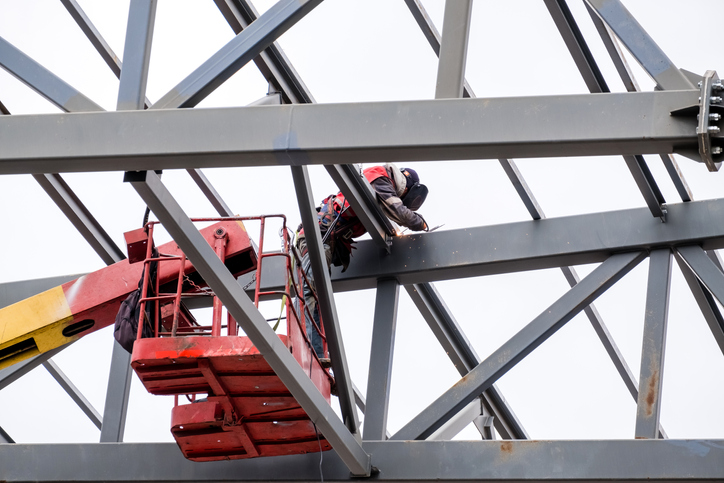
Welding classes at NATS will prepare you for the working conditions you will experience as an apprentice–such as tight spaces, and in varying climates, ranging from scorching heat to freezing cold weather.
Plenty of Career Opportunities at Your Fingertips
Graduates of our program have gone off to pursue a variety of career paths, holding many different job titles including: an Apprentice Boilermaker, Apprentice Welder, Construction Millwright Apprentice, and more. The skills you will acquire during your program, and as an Apprentice Boilermaker will equip you to work on: pressure vessels, storage tanks, boilers, towers, heaters, steel, and more. You will also have the opportunity to work at different job sites, such as oil refineries, nuclear power plants, pulp and paper mills, and gas generating stations.
Are you looking for a welding college that will provide you with the skills needed to thrive on this path?
Contact NATS to learn more about our program.
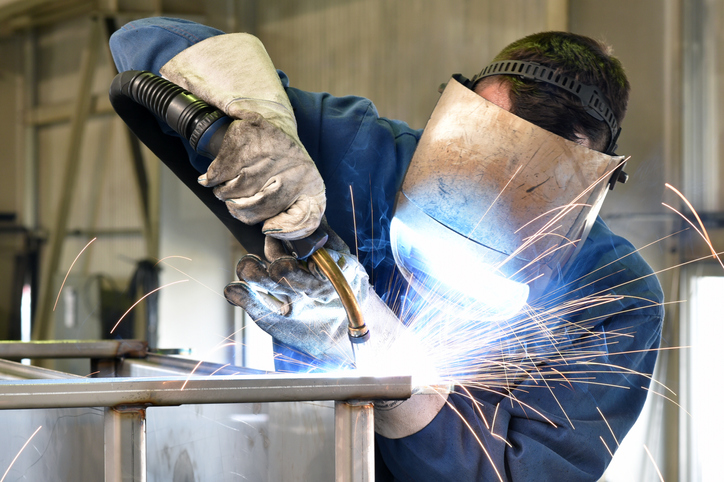
If you’re training to become a welding technician, you may be surprised to know that there are a wide range of career opportunities available to you upon graduating. With the skills you build in a welding technician program, you’ll be able to transition into a number of different work environments and career paths where your knowledge of welding principles will be applied to a variety of projects.
In a welding program, you’ll receive hands-on technical training in the welding arts, learning techniques in Gas Metal Arc Welding (GMAW or ‘MIG’), Gas Tungsten Arc Welding (GTAW or ‘TIG’), Shielded Metal Arc Welding (SMAW or ‘Stick’), and more. You’ll also learn about important safety procedures on the job, in addition to welding-associated mathematics and symbols. After completing your program, you’ll be able to transition into a number of different careers–some of which may require additional training or apprenticeships. Below, explore some career paths within the welding industry.
Become a Welding Technician After Welding Technician Training
Once you complete your welding technician training, one of the most direct career paths you can take is to become a welding technician. Welding technicians apply their knowledge of different welding techniques, materials, equipment, and joining processes to the manufacturing of welded products. These professionals assist welding engineers to develop and implement different techniques in order to produce a high-quality product–ensuring that the manufacturing process is in-line with industry standards and codes. They may work to solve problems, test new products, and perform experiments in order to identify the ideal welding process. If you have strong problem-solving skills, this could be the career path for you.
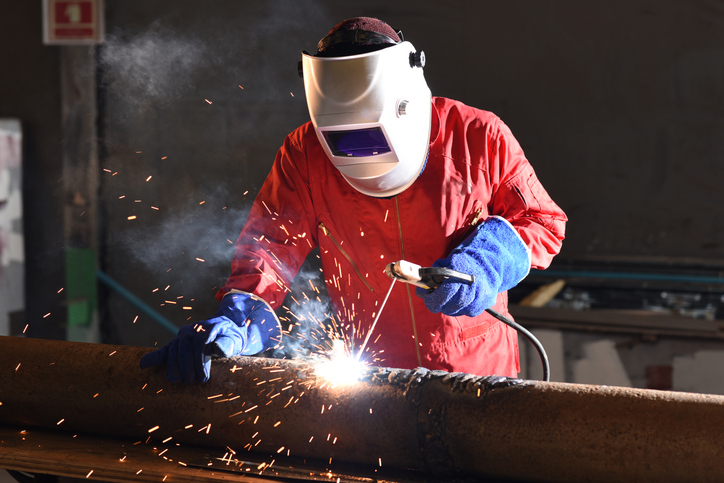
You Might Choose to Become a Boilermaker
One of the many specializations available within the welding industry is that of a boilermaker. Boilermakers work to install, maintain, repair, and manufacture the boilers within different buildings and ships. Boilers are responsible for heating up liquid in order to heat structures or generate electricity. As a boilermaker, you’ll work to interpret blueprints and assemble pre-made boiler components using different welding techniques. With your skills, you’ll be able to ensure that the boiler tank and system you manufacture is structurally sound so that it works safely and effectively.
A Career as a Welding Inspector Suits Those Attentive to Detail
With some additional experience in the welding industry, the knowledge you gain in welding college can translate to a future career as a welding inspector. Welding inspectors apply their knowledge of different welding processes, standards, materials, and methods of testing to the inspection of different welding processes. These professionals work to verify that the product being welded is done in compliance with different safety codes and industry standards–in addition to ensuring that the correct materials and equipment is being used. Their expertise is critical when it comes to ensuring the safety and soundness of the welding project. If there are any mistakes or discrepancies, welding inspectors are responsible for catching them and developing a sound solution. If you have a keen eye for detail, consider this career path after completing your welding training.
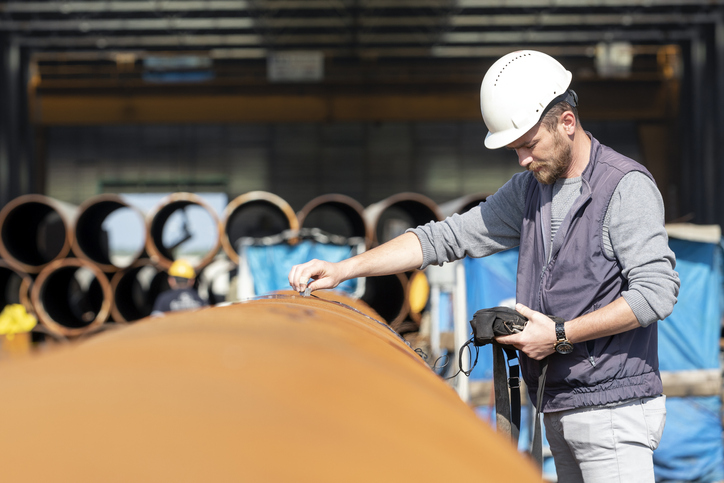
You’ll Be Qualified to Become a Pipefitter
Pipefitters have a dynamic and important job within the industrial manufacturing industry. These professionals are responsible for creating, assembling, installing, and maintaining piping systems used in commercial, marine, or industrial structures. The piping systems they create are typically used to transport fuel, water, chemicals or steam, and often include technical assemblies with hydraulic, high-pressure, cooling, or pneumatic functions. Within this specialized career, pipefitters apply their understanding of piping systems to the implementation of different design plans–creating and maintaining piping systems by applying welding, cutting, and fabrication techniques. If you’re looking for a hands-on technical career in the welding industry, this could be the job for you.
Are you ready to enroll in welding classes?
Gain the skills to launch a dynamic career with a program at the North American Trade Schools!
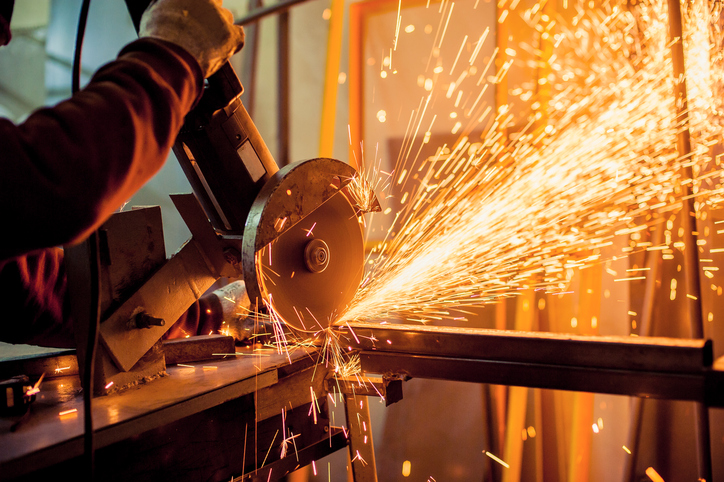
A career in welding requires skilled professionals with an awareness of health and safety practices. Professional welders often work in extreme conditions involving high temperatures, gases and fumes, electrical voltage, and ultraviolet rays. Knowing how to safely operate industry-grade equipment within that environment is an essential skill.
One of the most common tools in welding is an angle grinder. Grinders are used extensively in the preparation of work to cut, grind, blend, buff, and clean metals. While grinders are a common feature of welding, they still carry a number of safety hazards. That’s why it is important that those in the industry learn how to properly use a grinder in order to minimize the associated risks. If you’re considering joining the welding profession, keep in mind these safety tips when working with a grinder.
Make Sure to Choose the Right Wheel
First and foremost, you need to ensure you have selected the right wheel for the material and application. For example, a grinding wheel should never be used to cut, and a cut-off wheel should never be used to grind. Likewise, using the wrong grinder for your chosen material can cause damage to the wheel. If you were to use a wheel meant for steel on aluminum, the wheel could become clogged and break down during the process. Professionals with welding technician training will be able to identify the designated uses of different grinding wheels.

It’s also important to pay attention to the revolutions per minute (RPM) of a wheel to ensure you don’t exceed the maximum RPM recommended by the manufacturer. While a wheel may fit on a grinder, it doesn’t mean it’s intended for that grinder. You never want to use a wheel on a grinder with a different RPM rating. It’s a good idea to check the label on both the wheel and the grinder before assembling the two parts.
Always Use a Wheel Guard
As a professional welder, you’ll likely use a grinder in a variety of ways and over a prolonged period of time. Naturally, grinders are subject to cracks and damages with extensive usage. It’s important to ensure that a grinder is in good condition before using it, and to properly install the wheel guard.
Wheel guards are used for deflecting sparks and debris away from the operator, and to protect users in the instance that the wheel guard detaches. Grinding wheels are at risk of cracking or breaking, and if this happens, pieces of shrapnel can be sent flying. For that reason, it’s essential to use the proper wheel guard in the correct position at all times. Most guards provide 180-degree coverage, and can easily be adjusted so that the exposed part of the wheel is positioned away from you.

Take Care of Your Space After Welding Technician Training
Students in welding classes can expect to take courses in health and safety, where they learn to create a safe work environment and to minimize general hazards in welding. When using an industry grinder, it’s important to take measures to protect your face and body from harmful materials.
Before starting their work, professionals should wear all of their Personal Protective Equipment (PPE), including safety glasses, a helmet, ear protection, gloves, and aprons. These will protect operators from abrasive particles. It’s important not to wear loose-fitting clothes or jewelry while grinding, and to keep hair away from moving parts.
By preparing yourself for the workplace and remaining mindful of your surroundings, you will be able to perform your job safely, efficiently, and effectively.
Are you interested in welding college?
Contact NATS to learn more about our program!

If you’re pursuing training in welding, know that there are a range of opportunities that await you in the industry today. Boilermaking, jewel and stonework, plumbing, and transportation assembly are just a few of the common options in this trade. The job market for skilled welders is expanding and now spans a wide range of manufacturing sectors. If you’re looking for a diverse, creative and manually-intensive career, welding offers rewarding prospects.
A great welding program will include both theoretical and hands-on training. Trainee welders can expect to learn about the modern methods and uses of welding, and be ready to apply them to an industry-grade job upon graduating.
To understand more about your options, let’s take a look at 4 surprising facts about this skill.
1. There Are Many Different Types of Welding
As a trainee welder, you’ll practice using a number of different methods. For those without any prior knowledge of the trade, welding school offers comprehensive training to
get you to grips with the mechanics of welding. Welding courses will familiarize you with modern equipment used across different processes to prepare you for practical industry work. At the North American Trade School (NATS), students gain both theoretical and hands-on understanding of major welding methods. These include Gas Metal Arc Welding, Gas Tungsten Arc Welding, Flux Cored Arc Welding, and Shielded Metal Arc Welding. Upon graduating, students often have the chance to apply this knowledge to an apprenticeship as an ironworker, pipefitter, and more.

2. Welding Teaches You Many Different Lessons
As a welder, you’ll master more than just manual and technical skills. It is a trade that teaches resilience, creativity, and organization when working in different settings. Welders are often exposed to smoke, heat, and other harsh substances in their work, while using technical equipment such as drills and grinders. Precision, stamina, and awareness of your surroundings are invaluable skills in this trade. In the NATS welder program, courses cover more than the basics of equipment and the processes of welding joints together. Students also learn the fundamentals of creating a safe working environment, and how to identify and control hazards in welding.
3. Most Man-Made Substances Involve Welding
Over 50% of man-made products today are constructed using welding. From large-scale industrial equipment to automobiles, to personal computers, welding techniques are used in most manufacturing processes. At our NATS welding program, practical lab training teaches students the techniques essential to real-life productions. Over a 55-week program, students at NATS have plenty of access to on-campus labs. Here, they’ll gain first-hand experience of modern equipment, and be ready to apply that knowledge to work in their field. Courses at NATS also teach students how to decipher welding symbols on blueprints and apply basic math to perceive volume, area, and effective part layout.
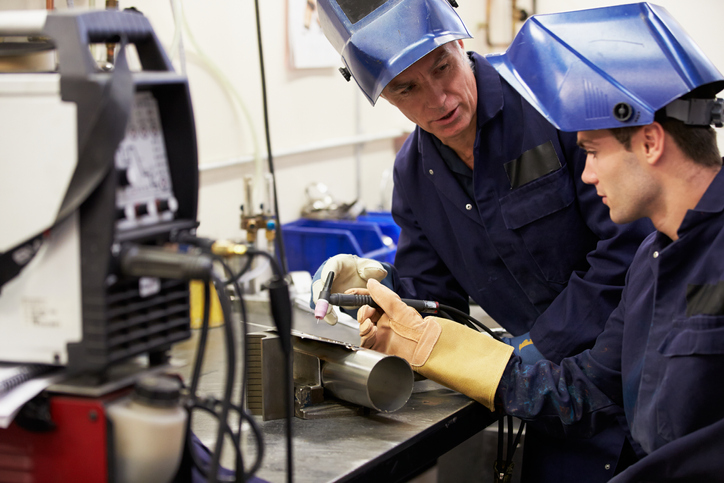
4. Welding Opens The Doors To Many Career Paths
Welding is a skill you can utilize across many different industries. Technological devices, transport links, and other industrial equipment all require welding to function. Welders can apply their skills to finish making popular consumer items such as toys, computers, and electronic devices. As such, modern production companies have an ever-growing demand for skilled welders. After completing an apprenticeship, trained welders can go on to work in the design and manufacturing of common appliances. A good welding college will offer you the training to support each and every career ambition. Graduates will come away with an experience of technical equipment, modern fabrication methods, and a trained eye for structure and design.
Do you want to learn more about the benefits of a welding career?
Contact North American Trade Schools today!





